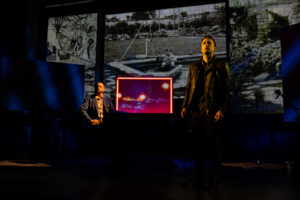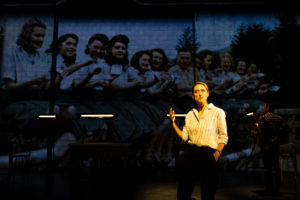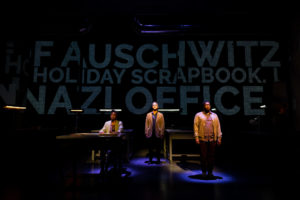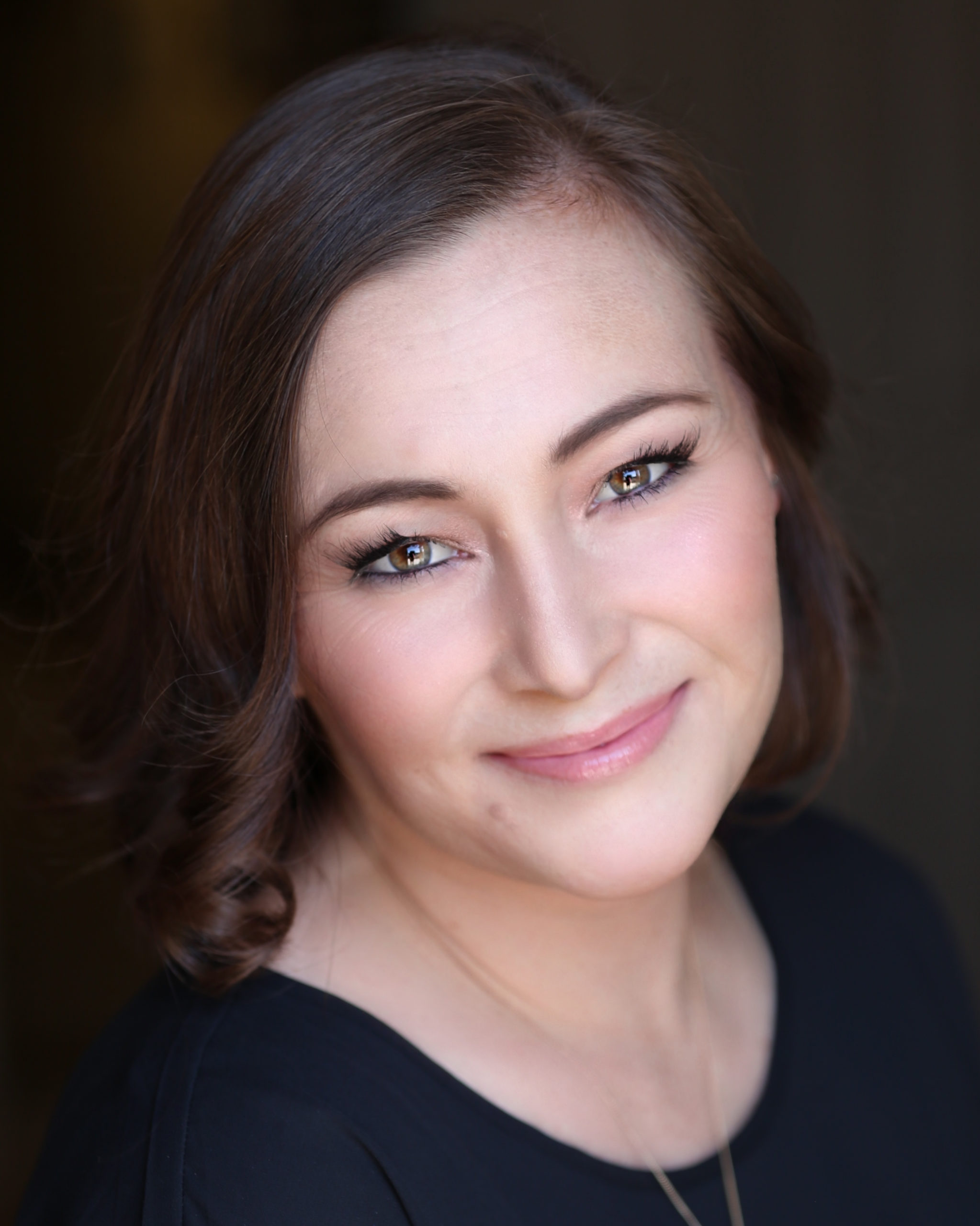Here There Are Blueberries explores the chilling layers of the perpetrators of Auschwitz
“I know I couldn’t have been a Mengele… or a Höcker… but could I have been a Helferinnen?” The audience leaves asking themselves that same question of complicity following La Jolla Playhouse’s world premiere Here There Are Blueberries, running through August 21.
This play, a co-production with New York’s Tectonic Theater Project, is the brainchild and directorial work of Tony-nominee Moisés Kaufman (Playhouse’s 33 Variations) and written in tandem with Amanda Gronich. It captures the receipt of an album of World War II photographs at the United States Holocaust Memorial Museum by archivist Rebecca Erbelding, who realizes that the images have been taken in Auschwitz from the perspective of the camp’s adjutant Karl Höcker. Recognizing the importance of the discovery, Rebecca (Elizabeth Stahlmann) and her historian colleagues begin to delve into the snapshots. What they uncover about the camp staff is chilling as is… and then German businessman Tilman Taube (Grant James Varjas) recognizes his grandfather in the photos online. Taube begins the work of engaging with other Nazi descendents and learning what other families will and will not admit to, accept responsibility for, and look for in themselves.

Grant James Varjas (left) and Charlie Thurston in La Jolla Playhouse and Tectonic Theater Project’s world-premiere production of Here There Are Blueberries; photo by Rich Soublet II.
The ensemble cast does a wonderful job throughout the production, finding exceptional beats as they portray multiple roles with fluidity. Stahlmann and Varjas are joined onstage by castmates Scott Barrow, Charles Browning, Rosina Reynolds, Jeanne Sakata, Charlie Thurston, Frances Uku, and understudies Noah Keyishian, Sabrina Liu, and Dana Colagiovanni. I found the subtlety of choices read best in their archivist/ historian roles, rather than the historical ones… surprising to me, as it is the pedestrian nature of the photos that inspires the premise of the show. However, ultimately, it seemed that it was the reflection on what each photo meant and represented, who appeared in it, and who they were, not to the camp inmates, but to the world around them, that forced us as an audience to reckon with the idea that evil existed (and exists) simultaneously with the everyday.
One unexpected standout was the Foley work, paired with Bobby McElver’s sound design and stunning directional lighting by David Lander, which serves to breathe moments of the story to life: metal spoons on china bowls punctuate the titular blueberries at Solahütte, the nearby chalet and resort for SS families; O Tannenbaum alongside jingle bells marks a disconnect between the final days of the camps and a Nazi officer family Christmas party; and an accordion onstage brings the Chorus of Killers snapshot to near focus.

Elizabeth Stahlmann and Charlie Thurston in La Jolla Playhouse and Tectonic Theater Project’s world-premiere production of Here There Are Blueberries; photo by Rich Soublet II.
Above all, most impressive were the show’s frequently and effectively incorporated projections in the form of photographs, text, and scenes. Bravo to projection designer David Bengali; this work was stunningly designed and tightly executed and cemented the raw impact of this production. The visual exploration of the primary source document itself, the photo album, was key in creating a documentary feel and candidly illuminating the stories of the perpetrators who worked in (and maintained plausible deniability surrounding) Auschwitz. This interplay of the projections tied in with the familial recollections of Nazi camp staff as complex human beings who, in some cases, had a desire to “do good,” cast light on the age-old narrative of good vs. evil and further begs the question of how we, as humans reckon with culpability.

Frances Uku, Scott Barrow and Charles Browning in La Jolla Playhouse and Tectonic Theater Project’s world-premiere production of Here There Are Blueberries; photo by Rich Soublet II.
As press staffer for the BDM (played by Jeanne Sakata) explains: “I fiercely suppressed any sort of consideration.” The playwrights double down with the intentional reinforcement: “every genocide starts with words… it was decent, intelligent people who did this.” It’s a bold choice, holding that mirror up to the audience and the world… and it is an effective reminder that small moments of indifference or complicity can pave the slippery slope to being an accomplice.
Here There Are Blueberries runs Tuesdays and Wednesdays at 7:30 p.m, Thursdays and Fridays at 8 p.m, at 2 and 8 p.m. on Saturdays, and at 2 and 7 p.m. on Sundays through August 21 at the Sheila and Hughes Potiker Theatre at La Jolla Playhouse. Tickets: LaJollaPlayhouse.org.

Cassiopeia Guthrie is a journalist, educator, and business consultant based in Southern California. Cassiopeia earned her bachelor’s in journalism at San Diego State University, an executive master’s in business administration from Quantic School of Business and Technology, and completed a training in photojournalism/storytelling for impact with National Geographic. She boasts 20 years of success in digital content development, project management, curriculum development, and business leadership across the education, media/entertainment, and communications industries, including running a scholastic journalism program as well as a social media/social PR internship program for a branding agency. Cassiopeia has 12 years of experience with nonprofit theatre management and production and is an Aubrey Award winning actress with numerous credits to her name at a variety of San Diego theaters. Cassiopeia’s writing has been seen in publications including People Magazine, Broadway World, Vista Press, City Beat, Valley Roadrunner, Escondido Times-Advocate, and others, and she has been seen discussing theatre on local television stations including CBS, NBC, ABC, and KUSI.


